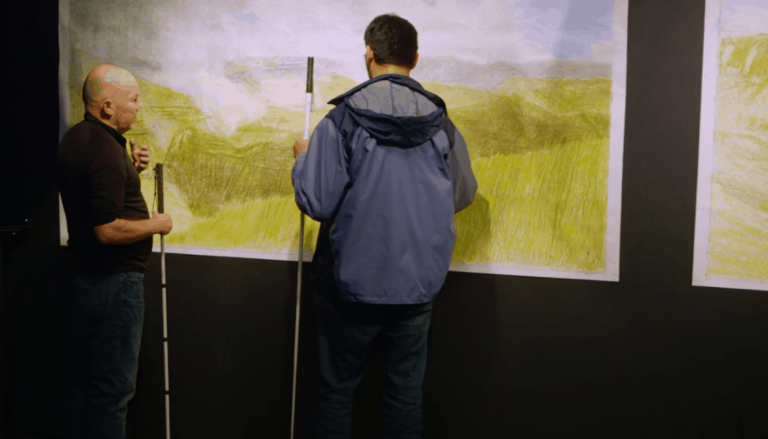Traditional art is considered by most as something that can only be experienced visually. The experience of walking into a gallery and observing the work of painters and sculptors is, by its very nature, intended to be taken in visually. This gave legally blind artist Keith Salmon and his partners a very puzzling issue when they endeavored to help the visually impaired experience art.
This “Eyes-Free Art” project was an incredible undertaking, but it may have broken through the visual barrier to traditional art and created a truly inclusive new mixed media. The project puts viewers in a room filled with 4 Kinect devices and 15 overhead speakers, which mix together 54 soundtracks to create a dynamic artistic experience.
The Kinect sensors detect movement and mix together the music accordingly, going back and forth between the sounds of nature to accentuate Salmon’s paintings. Initial observers from the project’s premiere have had overwhelmingly positive responses, with one woman – an art lover who had lost her sight – breaking down into tears.
While Eyes-Free Art isn’t available to the public yet, a patent has been filed so that it can continue being developed and improved. If you want to see the project in action and happen to be around Scotland next year, “The Oregon Project” will be on display at the Tent Gallery at the Edinburgh College of Art in Scotland in April 2017.


